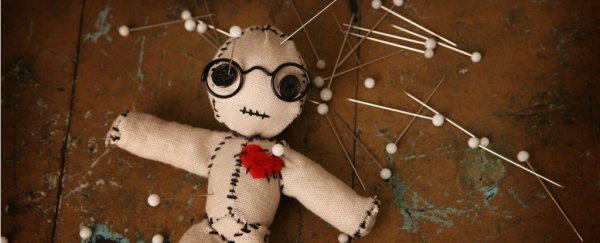The possibility of using brain stimulation to help prevent future violence just passed a proof of concept stage, according to new research published Monday in the Journal of Neuroscience.
In a double-blind, randomized controlled study, a group of volunteers who received a charge to their dorsolateral prefrontal cortex - the part of the brain that lies directly behind the forehead and is responsible for planning, reasoning and inhibition were - were less likely to say they would consider engaging in aggressive behavior compared to a similar group that received a sham treatment.
The experiment looked at aggressive intent as well as how people reasoned about violence and found that a sense of moral wrongfulness about hypothetical acts of aggression was heightened in the group receiving the transcranial direct current stimulation (tDCS).
This form of brain stimulation delivers targeted impulses to the brain through electrodes placed on a person's scalp.
"Zapping offenders with an electrical current to fix their brains sounds like pulp fiction, but it might not be as crazy as it sounds," said Adrian Raine, a neurocriminologist at the University of Pennsylvania and one of the study's investigators.
"This study goes some way toward documenting a causal association by showing that enhancing the prefrontal cortex puts the brakes on the impulse to act aggressively."
In the experiment, 39 volunteers were given direct current stimulation to their prefrontal cortex for 20 minutes. A placebo group was given a low current for 30 seconds.
On the following day, both groups read two stories, one depicting an act of physical aggression and the other an act of sexual aggression.
Both groups of volunteers were then asked to rate their likelihood of performing similar acts on a scale of one to 10, with one being the least likely and 10 most likely.
To gauge their sense of morality, subjects were asked to rate on a scale of zero (not at all) to 10 (very) how morally wrong it would be to act the same way as the protagonist in both stories.
For a third task measuring aggression, subjects were shown a computer-generated image of a doll and told that it represented a partner or close friend.
They were then told they could relieve themselves of any negative energy toward that person by inserting zero to 51 pins into the doll. The higher the number used, according to this metric, the greater the level of aggression.
The researchers found a 54 percent reduction in aggressive intentions in the group receiving the stimulation and a 31 percent jump in their sense of moral wrongfulness about acts of aggression. There was no significant difference between the two groups in the voodoo-doll-like test measuring behavioral aggression.
Lead researcher Olivia Choy, a criminologist who teaches in the psychology department at Nanyang Technological University in Singapore, said, "While this is certainly an early step in the study of tDCS and antisocial, aggressive behavior, it may inform future approaches to reducing aggressive intent and behavior through a noninvasive, relatively benign intervention that targets a biological risk factor for crime.
"If these findings can be replicated and extended, it may be that use of tDCS on offenders is not entirely out of the question."
The study's scientists caution that this is still very early in the game and more studies need to be completed before an application is considered possible.
Roy Hamilton, the third scientist involved in the study and director of the laboratory for cognition and neural stimulation at the University of Pennsylvania's Perelman School of Medicine, says the experiment shows complex influences on a dangerous human trait.
"The study also suggests that violent thought and action are not wholly preordained by one's brain wiring, since they can be influenced by outside inputs," he said.
"In this study the outside input was electrical stimulation, but typically the outside circumstances that can influence the brain's machinery for controlling violence include the entire spectrum of lived experiences."
The study's participants included adults 18 and older, evenly split between male and female, and ethnically diverse.
Before participating, all were given a series of tests and questionnaires measuring such things as personality, criminality and childhood social adversity.
Tom Hummer, an assistant research professor of psychiatry at Indiana University School of Medicine, says the study should be understood more as an experimental manipulation than an early treatment study, especially because the doll-pin part of the experiment showed no difference in that lab measure of aggressive behavior.
"The biggest limitation is a lack of a behavioral effect," he said.
"It is difficult to measure actual aggression in the laboratory, but even in their measure they find no difference between groups in actual aggression. So it's hard to say whether subjects are just saying they would act differently or if real-world behavior would change."
Delaney Smith welcomes the new study and what it might portend down the road.
Smith is a forensic psychiatrist in Columbus, Ohio who helps treatment-resistant depressed patients with FDA-approved transcranial magnetic stimulation, which is weaker and less targeted than direct transcranial direct current stimulation.
"Right now we're limited in dealing with aggression and don't have very good interventions - just talk therapy, off-label medications," she said. "So anything we can add to the armamentarium to counter future acts of violence, the better."
2018 © The Washington Post
This article was originally published by The Washington Post.
